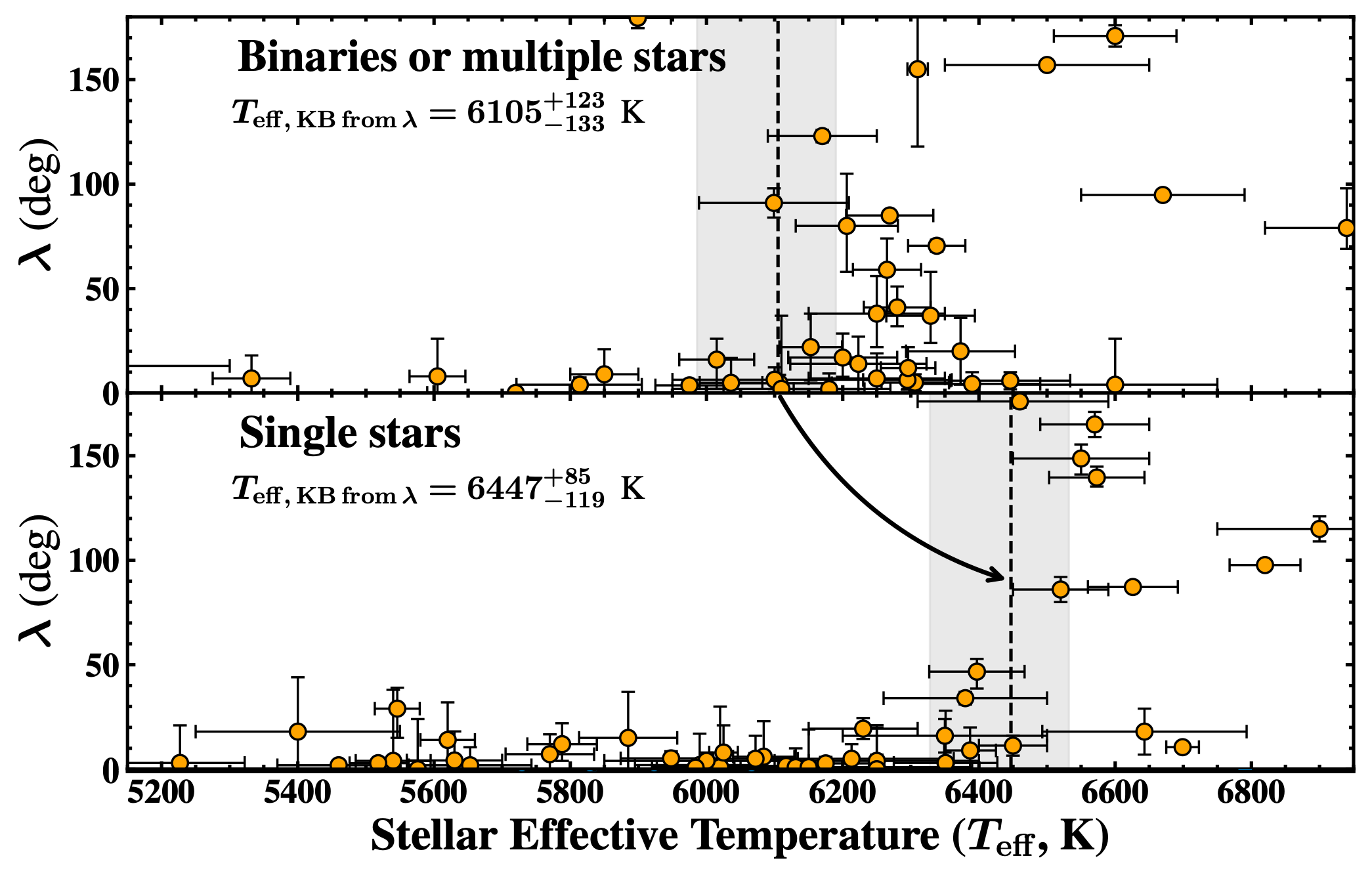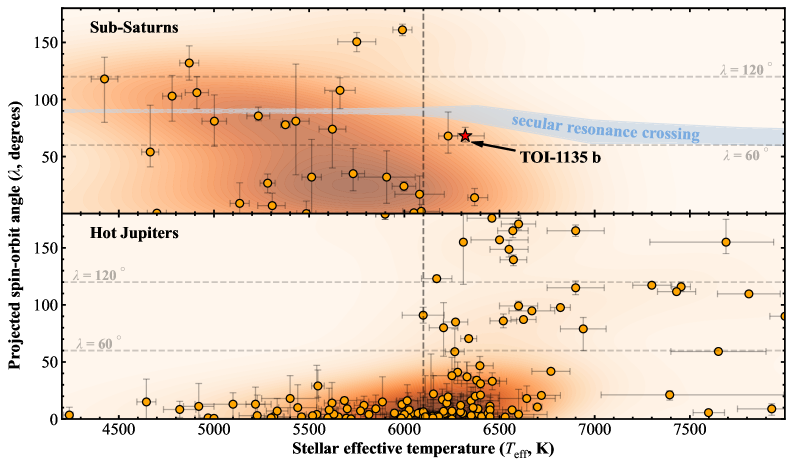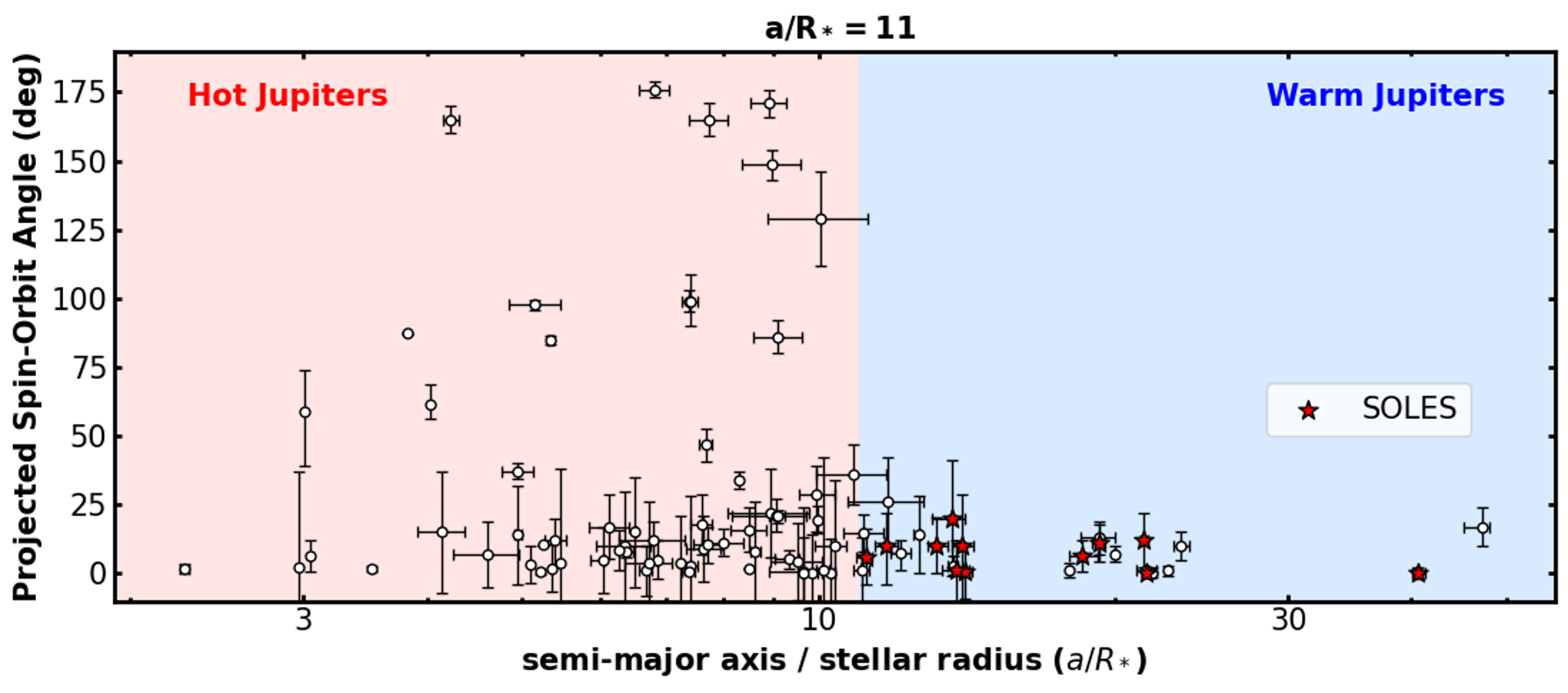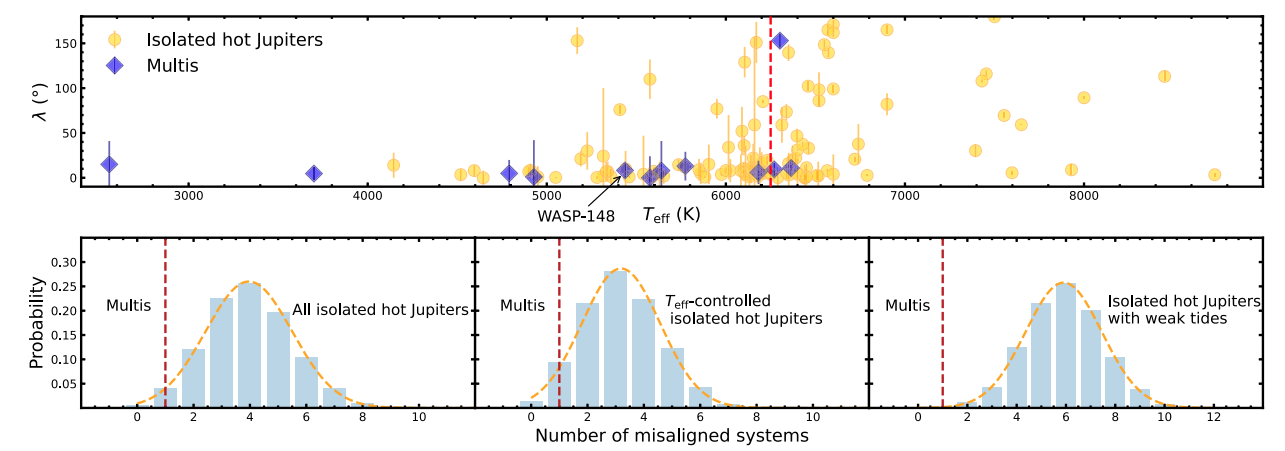Unified Kraft Break at ~6500 K
The stellar obliquity transition, defined by a Teff cut separating aligned from misaligned hot Jupiter systems, has long been assumed to coincide with the rotational Kraft break. Yet the commonly quoted obliquity transition (6100 or 6250 K) sits a few hundred kelvin cooler than the rotational break (~6500 K), posing a fundamental inconsistency. We show this offset arises primarily from binaries/multiple-star systems, which drive the cooler stellar obliquity transition (6105+123-133 K), although the underlying cause remains ambiguous. After removing binaries and higher-order multiples, the single-star stellar obliquity transition shifts upward to 6447+85-119 K, in excellent agreement with the single-star rotation break (6510+97-127 K). This revision has two immediate consequences for understanding the origin and evolution of spin-orbit misalignment. First, the upward shift reclassifies some hosts previously labeled ‘hot’ into the cooler regime; consequently, there are very few RM measurements of non-hot-Jupiter planets around genuinely hot stars (Teff > 6500 K), and previously reported alignment trends for these classes of systems (e.g., warm Jupiters and compact multi-planet systems) lose the power to discriminate the central question: are large misalignments unique to hot-Jupiter-like planets that can be delivered by high-e migration, or are hot stars intrinsically more misaligned across architectures? Second, a single-star stellar obliquity transition near 6500 K, coincident with the rotational break, favors tidal dissipation in outer convective envelopes; as these envelopes thin with increasing Teff, inertial-wave damping and magnetic braking weaken in tandem.





